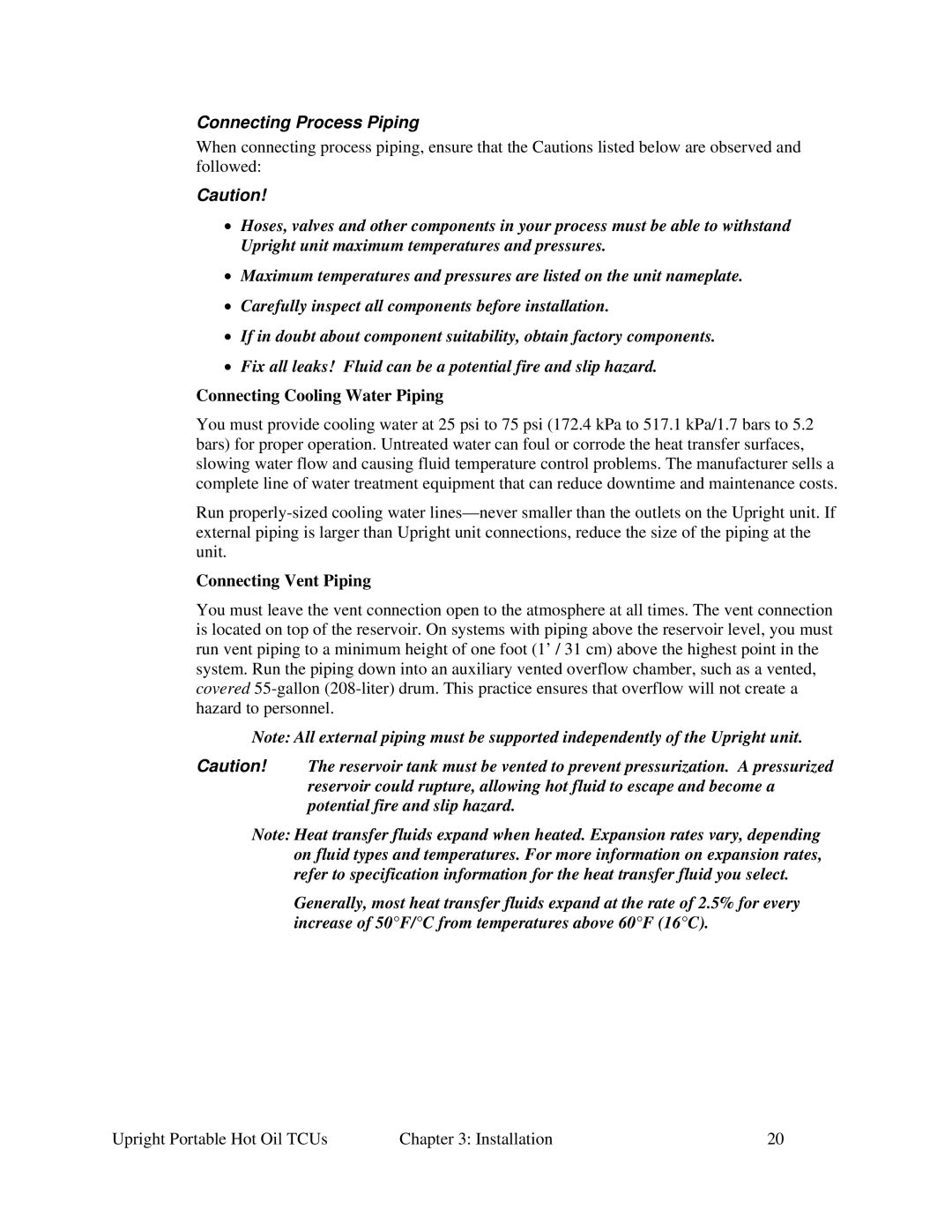Connecting Process Piping
When connecting process piping, ensure that the Cautions listed below are observed and followed:
Caution!
•Hoses, valves and other components in your process must be able to withstand Upright unit maximum temperatures and pressures.
•Maximum temperatures and pressures are listed on the unit nameplate.
•Carefully inspect all components before installation.
•If in doubt about component suitability, obtain factory components.
•Fix all leaks! Fluid can be a potential fire and slip hazard.
Connecting Cooling Water Piping
You must provide cooling water at 25 psi to 75 psi (172.4 kPa to 517.1 kPa/1.7 bars to 5.2 bars) for proper operation. Untreated water can foul or corrode the heat transfer surfaces, slowing water flow and causing fluid temperature control problems. The manufacturer sells a complete line of water treatment equipment that can reduce downtime and maintenance costs.
Run
Connecting Vent Piping
You must leave the vent connection open to the atmosphere at all times. The vent connection is located on top of the reservoir. On systems with piping above the reservoir level, you must run vent piping to a minimum height of one foot (1’ / 31 cm) above the highest point in the system. Run the piping down into an auxiliary vented overflow chamber, such as a vented, covered
Note: All external piping must be supported independently of the Upright unit.
Caution! The reservoir tank must be vented to prevent pressurization. A pressurized reservoir could rupture, allowing hot fluid to escape and become a potential fire and slip hazard.
Note: Heat transfer fluids expand when heated. Expansion rates vary, depending on fluid types and temperatures. For more information on expansion rates, refer to specification information for the heat transfer fluid you select.
Generally, most heat transfer fluids expand at the rate of 2.5% for every increase of 50°F/°C from temperatures above 60°F (16°C).
Upright Portable Hot Oil TCUs | Chapter 3: Installation | 20 |
